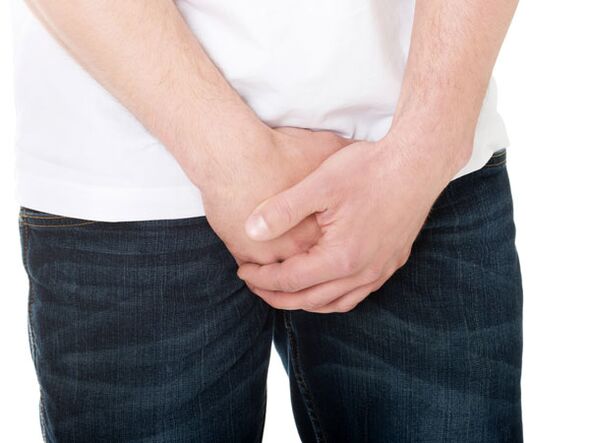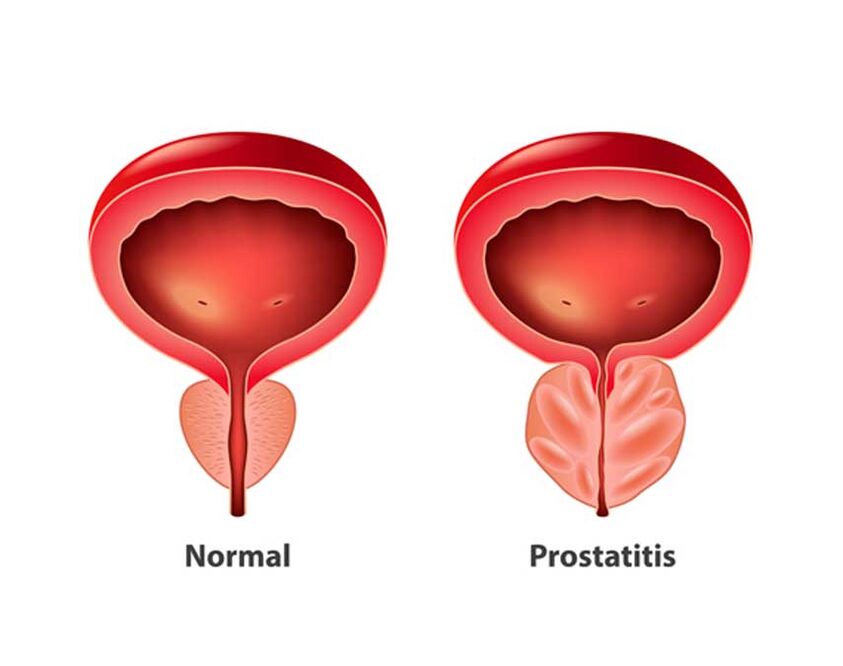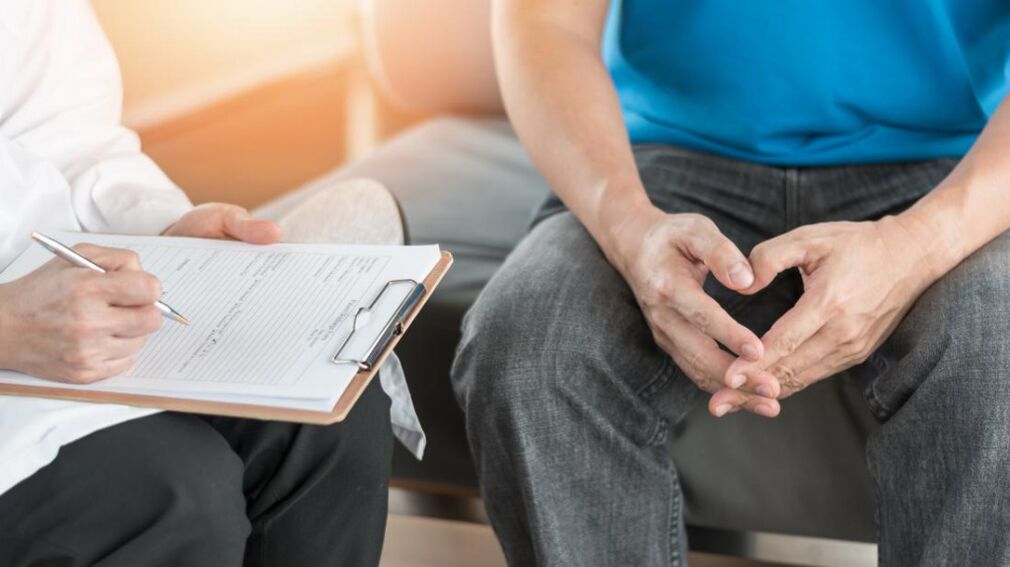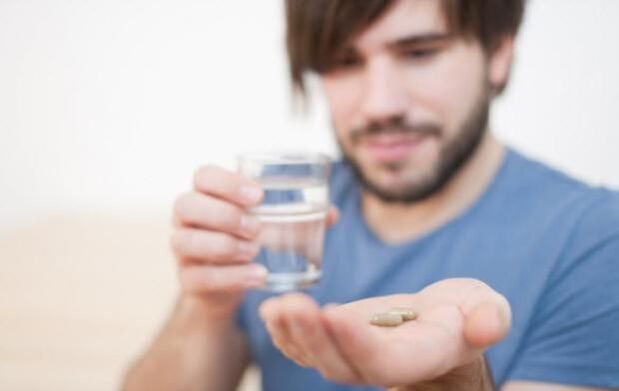Prostatitis is an inflammation of the prostate gland. It is more common in men of 25-50 years and older.Pain and fake urination, as well as general distress, are the main symptoms.The disease is often accompanied by fever and cold.
It is more common in men of 25-50 years and older.Pain and fake urination, as well as general distress, are the main symptoms.The disease is often accompanied by fever and cold.
Depending on the cause of the accident, the bacterial and abysterious form of the disease opens.Abactitis prostatitis is 90% of the most common inflammation of the prostate.According to estimates, about 50% of all men face this problem, at least once in life.
The main causes of development:
- E. coli;
- Sexually transmitted infections, including gonorrhea, chlamydia;
- Nervous system disorders;
- Reduce the body's protective functions.
The risk of developing the disease is likely to increase with chronic intoxication of the body with alcohol, morphine and nicotine.Studies in the field of modern andrology argue that among the inclined factors are crotch injuries, such as cyclists and motorcycles.Listed circumstances contribute to the exacerbation of latent inflammation in the body tissues.
The crucial importance in the development of pathology is given to stagnant events in the tissues.In the case of capillary blood flow, tissue swelling and exudation occur, which is full of acceptable conditions for the formation of an infectious process.
The structure and functions of the prostate glands
The prostate is a male genitals located below the bladder.The shredded gland weighs 20 grams in size and is surrounded by urethra and two ejaculation channels.They are guided by the secrets of tests, attachments and seed bubbles during ejaculation in the urethra.
The protracted gland produces the so -called.The secrets that are also part of the seed fluid (ejaculation).It is distinguished in the urethra when sperm effort and supports its transportation.About 70% of ejaculating fluid during orgasm is produced by prostate.Liquid is an alkaline secretion that combines and also protects sperm from acidic vaginal remedies, increases their mobility, and promotes their streams in the egg.Due to the anatomical location of the prostate, the disease often causes symptoms such as painful urination.
Types of prostatitis

Two forms of power are distinguished by the bacterial damage of the prostate:
- Sharp.Inflammation is caused by bacteria that grow urethra and colonization of prostate.These are Escherichia coli bacteria that live in the intestines.Other pathogens include enterobacteria and mycobacteria.Bacteria -provoked inflammation is about 10%of cases.
- Chronic.Unwanted bacterial infection can develop chronic.This is the case when complaints last more than 3 months.
Chronic prostatitis is diagnosed mainly in the elderly.In the absence of timely therapy, infertility develops in about 40% of cases.This is due to the fact that the body no longer develops a sufficient number of secrets, which ensures sperm mobility.
Table - Types and symptoms of prostatitis in men
| Name | Features | Symptoms |
| Abyss | The basis of emptying is based.Urina is included in the ducts, resulting in metabolic products (uric acid, purine and pyramidine bases) deposited in its tissue, causing inflammation and stones. |
|
| Catarrhal | Inflammation is localized in certain fractions of the gland, which results in a change in the submucous layer of the ducts and the structure of the mucous membrane.The follicles produce stagnant phenomena that are further progressed by the disease. |
|
| Folk | It is accompanied by moderate hypertermus or a typical subordinate.The focal suppuration of all damaged areas occurs. |
|
| Parenchymal | Multiple injuries are present.Most of the parenchyma, interstitial tissue participates in the pathological process.With the accumulation of multiple abscesses, an abscess is created. |
|
Inflammation can also occur without symptoms.It is found in sperm during a preventive examination containing leukocytes.
The current characteristics of the current
Prostatitis has several stages of development, each of which is characterized by certain symptoms:
- Stage I. It is characterized by the appearance of the inflammatory process and the enhanced functioning of the prostate.The general condition remains normal, except for the clinical picture of the disease.The first stage lasts for 1-3 years.At this point, complete cure with the help of medication can be done.
- Stage II.Symptoms appear.After some time, an erection and irritation disorder arises.During sexual intercourse, there may be no ejaculation.There is weakness and pain in the perinum.It is accompanied by a disruption of the structure of the body, which is full of deterioration of blood.Therapy is performed using antibiotics, immunomodulators and physiotherapy.
- Stage III.The last stage of disease development, accompanied by tissue necrosis.The scars appear on it, which begin to catch the internal organs.I reinforced wrinkles and deformed, which is full of dysfunctions of the genital system.There is severe pain in the urine and the signs of sciatica are improved.The patient should be under constant medical control.
In advanced cases, the disease is completely removed.Therefore, do not start diseases.It is best to consult a doctor when the first symptoms appear, which can be regulated on medication.
Symptoms of prostatitis

Manifestations are the same for all kinds of diseases, except fever, which are found only by bacterial origin.Signs of prostatitis are conditionally divided into 2 groups:
- Urinary vegetable apparatus - painful and frequent urination, pain in the lower abdomen, incomplete emptying;
- From sexual function - loss of orgasm, premature ejaculation, weak erection, pain in the rectum.
There is also an increased nervousness and anxiety caused by the concentration of attention in its condition.This may be accompanied by a change of character, grief, and irritation.
Possible complications
Lack of timely diagnosis and treatment causes the following complications:
- Urine delay.The patient cannot independently spoil the bladder, accompanied by severe pain.There are cases of flaws.To prevent complications, the urine is excreted through the catheter.
- Abscess.Pus accumulates, accompanied by high body temperature, coldness and severe pain in the perinum.Antibiotics with high doses and surgery are required.
- Blood infection (urosepsis).Bacteria penetrate the bloodstream and spread throughout the body.
If the disease is chronic and without adequate adjustments, people can become fertile.Only effective therapy helps prevent such complications.
Diagnosis

If the first signs and symptoms of prostatitis appear, you should consult your doctor who will diagnose and determine the appropriate therapy scheme.
The main stages of diagnosis:
- History of Anamnesis (Symptom Studies);
- Palpation of the Ingoin lymph nodes;
- Urethra smear;
- Transrectal ultrasound;
- Laboratory blood test;
- Samples of sperm and urine samples to determine the possible type of pathogenic microorganisms.
Based on the results obtained, therapy is prescribed.In advanced cases, surgical intervention cannot do without.Among the main instructions of surgical intervention, we must distinguish abscess, paraproctitis, and severe urinary tract delays.
Treatment of prostatitis

The conservative therapy scheme is prescribed only after the pathogen is established.In this case, self -government is unacceptable as this can lead to irreversible consequences of health.
The most effective drugs for prostatitis:
- 11 - Creeping palm fruit extract.
Phytopoplaration is prescribed for prostate damage.Created on the basis of freedom of fruit extract.It does not cause hormonal imbalances and does not affect the hypothalamic-pituitary system.
- 22 - Aminodidihroftalazindion Sodium.
Anti-inflammatory, immunomodulatory drug regulates the functional-metabolic action of adapted and congenital immunity cell structures.Suppositors are prescribed in difficult therapy for adults and for children 12 years and older.Effectively serves the manifestations of the inflammatory process, reducing the symptoms of the disease.
- 33 - Prostate.
The drug is widely used in urological diseases.It is the most effective treatment for chronic prostatitis.Moderately reduces the size of the prostate gland, improves urinary processes.Available in tablets and rectal suppositories.
- 44 - The form of prostate suppositories and intramuscular injections.
Signs of prostatitis and treatment of disease are created.The drug of animal origin relieves swelling of the gland, restores secretory functions, stimulates muscle tone.
- 55 - Nitrofurantin.
Antibacterial tablets have an antimicrobial effect.Rapidly eliminates inflammation, eliminates genital infections.
- 66 - ciprofloxacin.
Belongs to a group of fluoroquinolones.Effectively serves complex and uncomplicated forms of the disease.Helps eliminate existing disorders.
- 77 - Azoximer Bromide.
Immunostimulatory agent based on ninoximer bromide.Relieves inflammation and has antioxidant and detoxification effect.Increases body resistance to various infections.ხელმისაწვდომია ინექციის ხსნარის სახით.
- 88 -CEPHYM.
It has a wide range of action that inhibits the pathogen cell membrane.Contains a character.Used in difficult therapy.
- 99 - Joseamycin.
Macroline antibiotic based on Propionate Joseamycin.It has a bacteriostatic effect by inhibiting the synthesis of protein bacteria.It is produced in the form of granules, for suspension and preparation of tablets.
- 1010 - Doxycycline.
The antibiotic of the macrolide group has high activity in terms of intracellular microorganisms.It is prescribed for mixed infections of the genitals and urinary tract.
To increase the effectiveness of the drug, the gland massage is indicated.The procedure has a comprehensive action - accumulated accumulated secrets in the ducts to remove the body.
Prevention of prostatitis

In order to eliminate the development of the disease, it is advisable to avoid hypothermia, follow a diet, and conduct a regular sex life.It is also important to exclude sexually transmitted diseases.
A favorable prognosis depends on several factors:
- Timely diagnosis;
- Trigger factor;
- Form of the disease;
- Age;
- The general condition of the patient.
With timely detection and adequate treatment, the prognosis is always positive.Otherwise, results such as chronic inflammation and other complications may occur.You should visit a urologist at least once a year.With a recurrence of prostatitis, preventive visits to your doctor are recommended every 6 months.



























